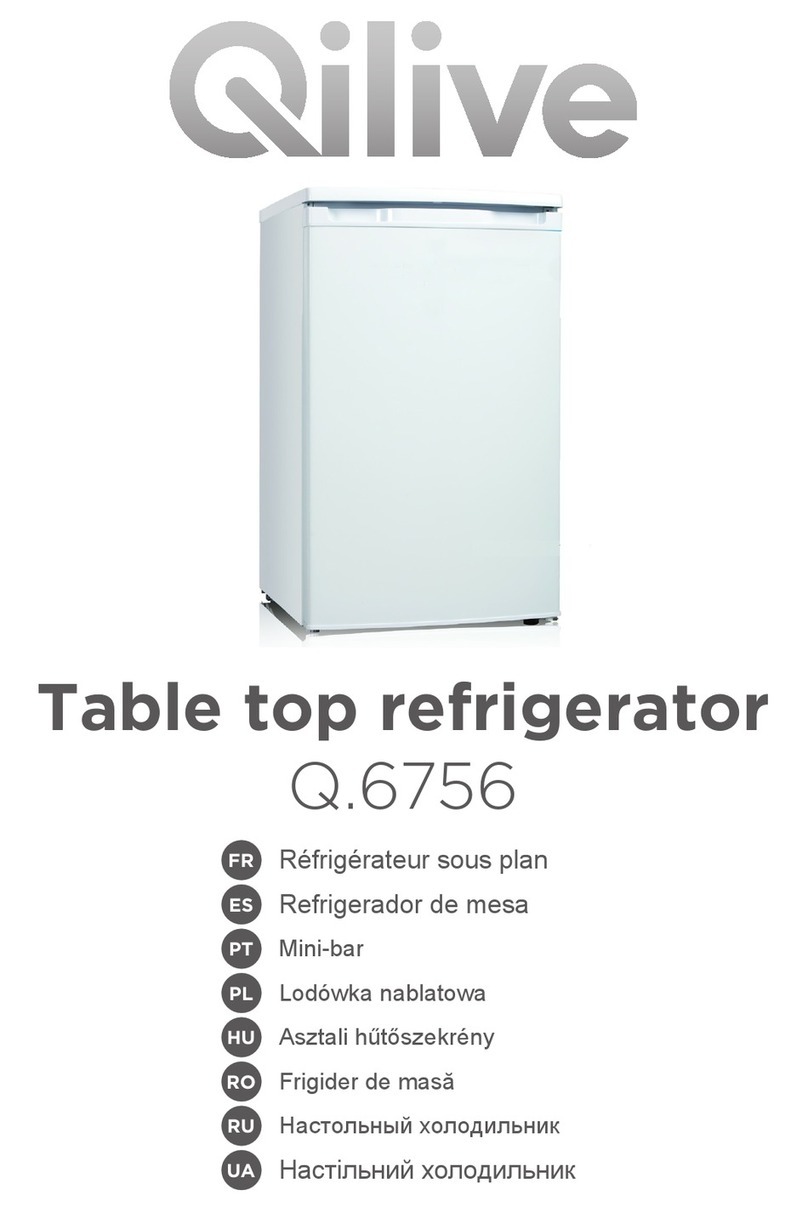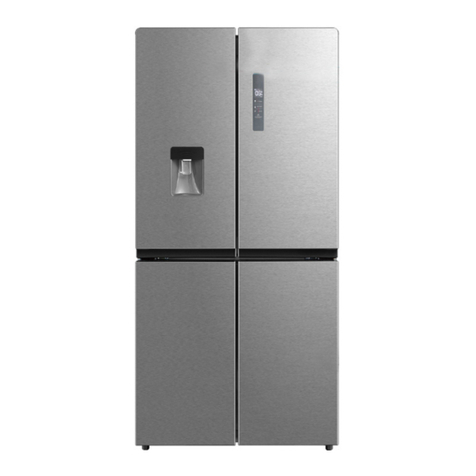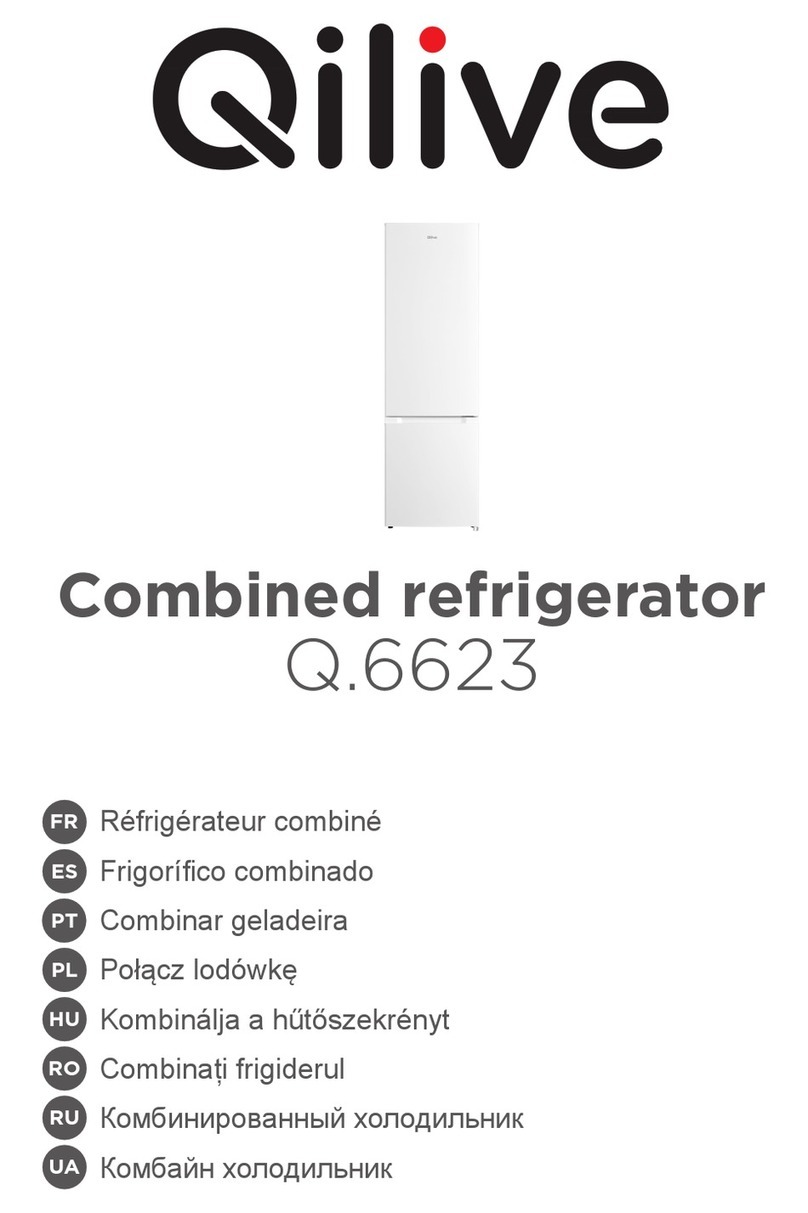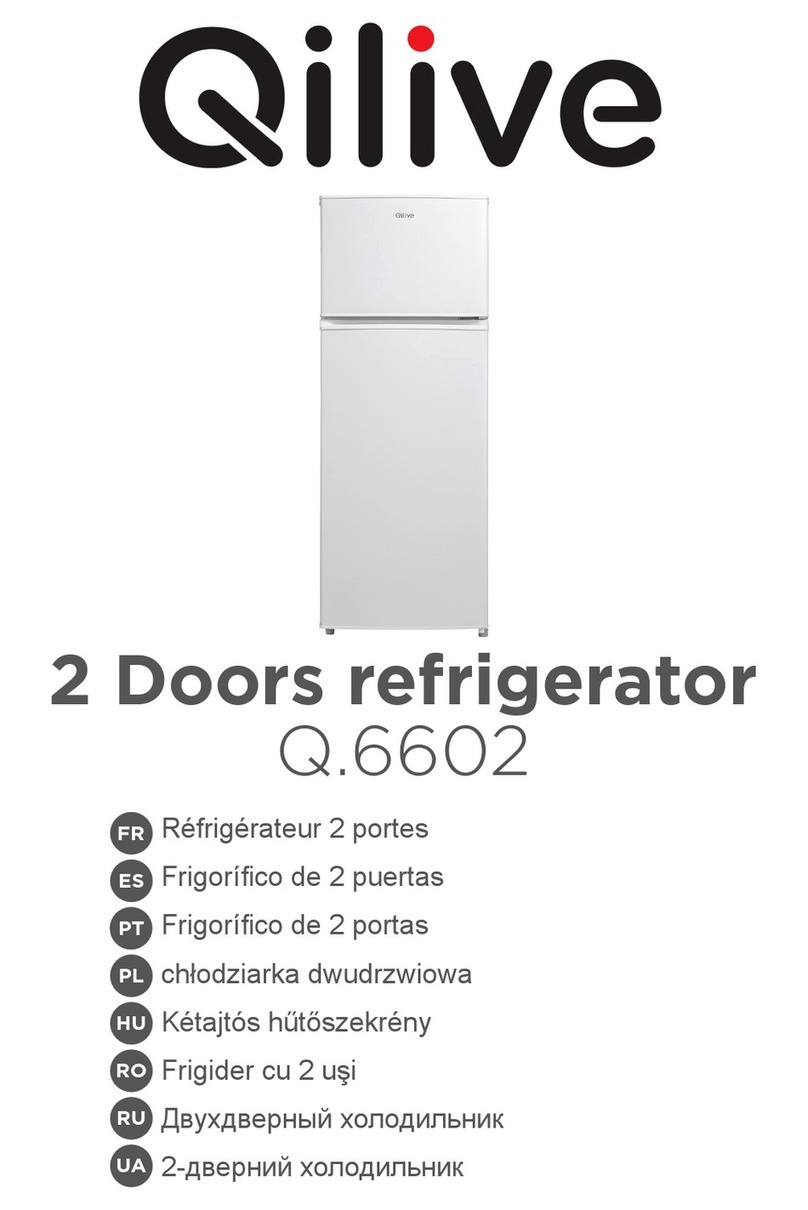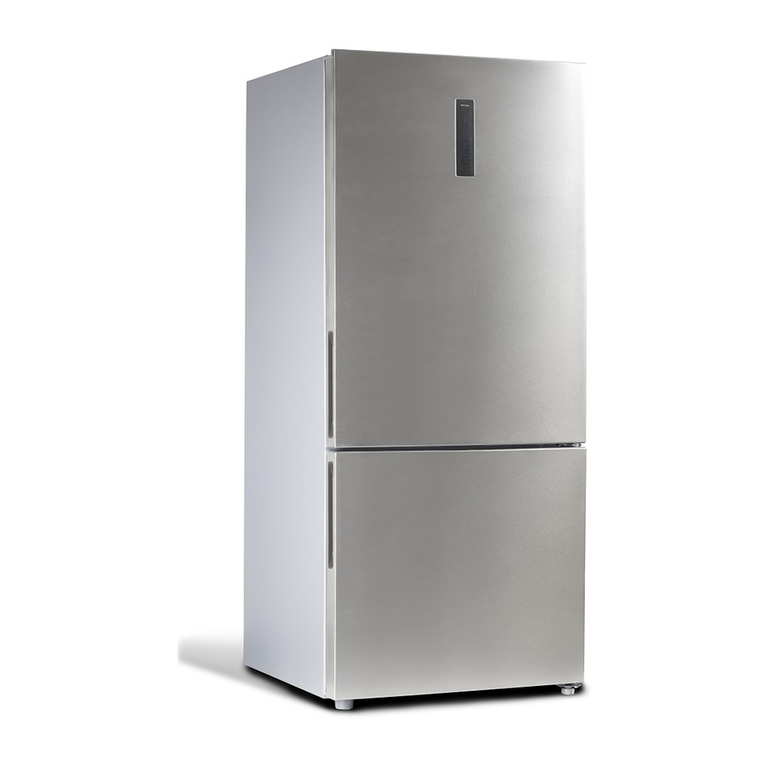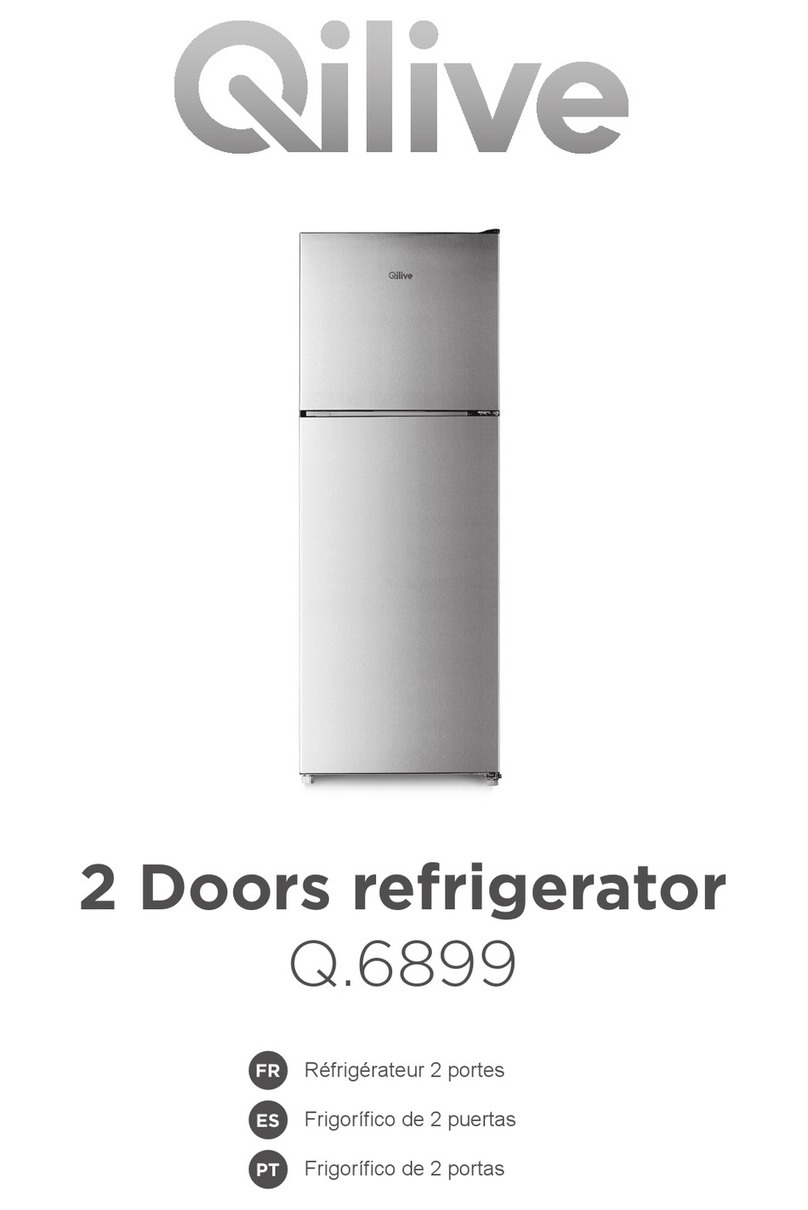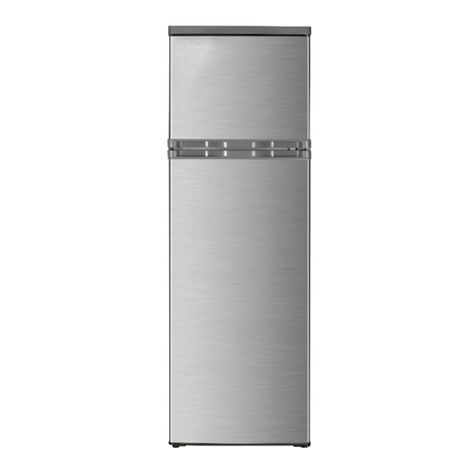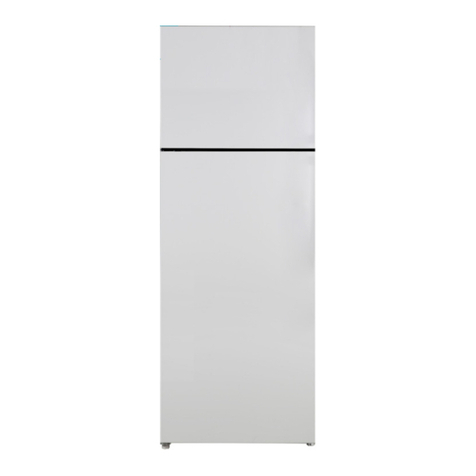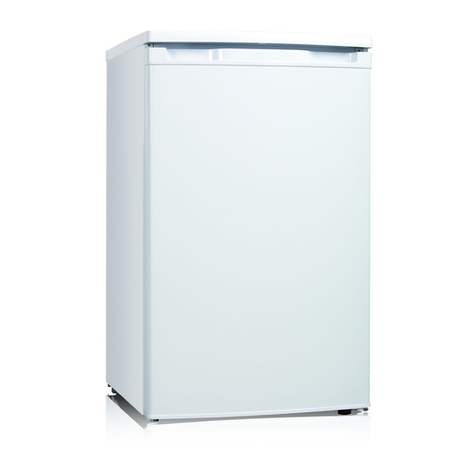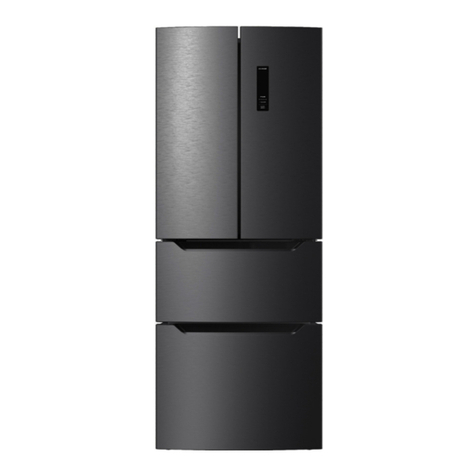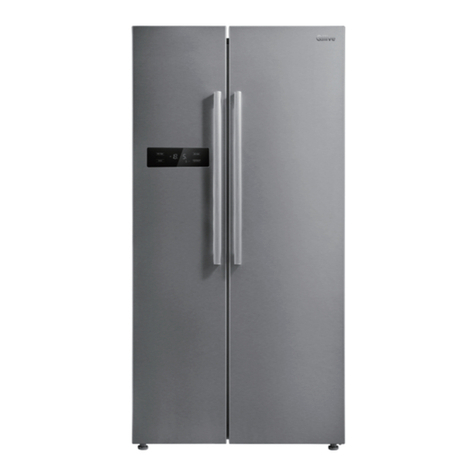
88
tasks must not be done by children without supervision.
Children aged 3 to 8 years may load and unload the
appliance.
17. To avoid contamination of food, follow the
instructions below:
– Opening the door for long periods can cause
a signicant increase of the temperature in the
compartments of the appliance.
– Regularly clean surfaces that may come into
contact with food and accessible drainage systems.
– Clean water tanks if they have not been used for 48
h; ush the water system connected to a water supply if
water has not been drawn for 5 days.*
– Store raw meat and sh in suitable containers in the
refrigerator to ensure that it does not come into contact
with or drip onto other food.
18. Two-star frozen-food compartments are
suitable for storing pre-frozen food, storing or making ice-
cream and making ice cubes. *
19. One , two , three-star and four-star
compartments are not suitable for the freezing of
fresh food.*
20. If the refrigerating appliance is left empty for long
periods, switch o, defrost, clean, dry, and leave the door
open to prevent mould developing within the appliance.
21. For appliances without a 4-star compartment: this
refrigerating appliance is not suitable for freezing food.*
*Please conrm applicability according to your product
compartment type.
22. For freestanding appliances: this refrigerating
appliance is not intended to be used as a built-in appliance.
23. Any replacement or maintenance of the LED lamps
must be completed by the manufacturer, its service agent
or similar qualied person.
24. The energy eciency class of the lamp is grade F.
25. WARNING: Dispose of the refrigerator according
to local regulations, as it contains ammable blowing gas
